Written by: Griffiths & Armour on: 03 Oct 2019
Stand-alone certificates and actions in negligent misstatement
Engineers are commonly asked to sign certificates containing broadly worded statements on conformity of the works with drawings, compliance with relevant regulations or general quality of build. These certificates are usually provided for the benefit of third parties, i.e. for someone other than the engineer’s client.
The language used in such certificates may be misleadingly innocuous and non-legalistic, and consequently it is easy for engineers to underestimate the potential liability exposures flowing from those wordings. They should be approached with extreme caution bearing in mind the key issues outlined below.
The Risks / Key Issues
Certificates are ‘stand-alone’ documents
A common misconception is that when engineers sign certificates they do so subject to the terms of their appointment agreements, and that they automatically enjoy the benefit of carefully negotiated liability provisions. This is not the case unless the certificate specifically says so. Absent any express provision to that effect, the certificate potentially creates a right of action in the tort of negligent misstatement, entirely independently of any right of action in contract.
Any claim by engineers’ clients under written forms of contract are inherently defined by what the contract expressly says, and hence engineers are entitled to invoke relevant terms in their defence. This might include the precise wording of the services section (which may be deliberately limited in scope) or specific liability provisions such as financial caps or exclusions. They are also subject to the relevant standard of care (usually, unless expressly provided otherwise, that of the reasonable skill, care and diligence ordinarily to be expected of a member of the relevant discipline). A right of action only arises in principle if the engineer failed to exercise that standard in performing the services, and any claim is subject to the contract’s express and implied terms.
Crucially, engineers’ liabilities under certificates on the other hand are determined not by whether they exercised reasonable skill and care in carrying out their services but whether they were negligent in making the statements contained in the certificate, which are typically drafted by someone other than an engineer. Furthermore, contractual provisions such as financial caps or express limits on the breadth of the engineer’s services are unenforceable against anyone whose claim does not depend on the contract.
Certificates generate third party claims
Claims in contract remain the most common form of litigation against engineers. The vast majority of claimants are therefore engineers’ clients. Third party claimants in contract are generally beneficiaries of collateral warranties, but as a proportion of claims by volume these are relatively limited.
However, certificates along the lines described above introduce a further class of claimant, which in principle extends to include anyone who might foresee-ably rely on statements made in the certificate for any purpose, perhaps including a purchaser or a lender, the context of a sale or mortgage of the development. In practice therefore, and for the reasons given above, issuing certificates creates the potential for actions by claimants who otherwise would never have had any legal basis for a claim against the engineer.
Certificates can extend the period of the engineer’s exposure
The limitation period for a claim in contract starts to run from the date on which the engineer breached its obligations. As a rule of thumb therefore, engineers can reasonably safely assume that the most obvious route for claims against themselves becomes barred six or twelve years after completion.
Providing certificates at a later date however (perhaps in the context of a sale, as mentioned above) can change this and can effectively start a different clock ticking for a further period which will extend beyond the date when actions in contract become time barred.
Certificates can create personal liabilities
Individual engineers who sign certificates typically do so on behalf of their employer firms, but in reality they create the potential for claims in tort against both their employers and themselves. In other words, claimants in the circumstances outlined above enjoy rights of action both against the relevant individual engineer and also against his employer who will be vicariously liable for any negligence in the usual way.
In itself this is not a peculiarity of certificates and the same point applies to designs or reports produced by individual engineers. In practice the employer’s professional indemnity insurance will usually extend to cover the liability of employees and former employees, and furthermore the employer firm is normally the more attractive defendant for a claimant seeking compensation. However, there is always the possibility of uninsured liabilities (failure of the class to provide indemnity for any number of reasons, perhaps because the class excess is far higher than the value of the claim) and individuals only enjoy protection for so long as the employer firm continues to purchase PI cover (which it may not if it ceases to trade).
The risk of personal liability is therefore a residual risk but is perhaps more relevant where an individual engineer adds his or her name to a certificate.
The Quid pro Quo (if any)
Certificates rarely involve a benefit for the engineer
Whether or not to agree to provide a certificate when requested is ultimately a commercial decision for an engineer, just like any other decision about the provision of services and acceptance of the associated risks.
A cost-v-benefit or risk-v-reward analysis can be helpful in thinking through the potential implications of such decisions: appointment agreements impose obligations and transfer risks but the parties are free to modify those risks through negotiating appropriate terms and a suitable fee.
Provision of certificates on the other hand rarely confer any benefit on the engineer in exchange for the additional exposures outlined above. They are often requested of the engineer only as something of an afterthought rather than as part of the original negotiation. An additional fee is rarely discussed: a certificate can be signed in a matter of seconds and is therefore (incorrectly) not regarded by the client as a professional service.
Practical Advice








